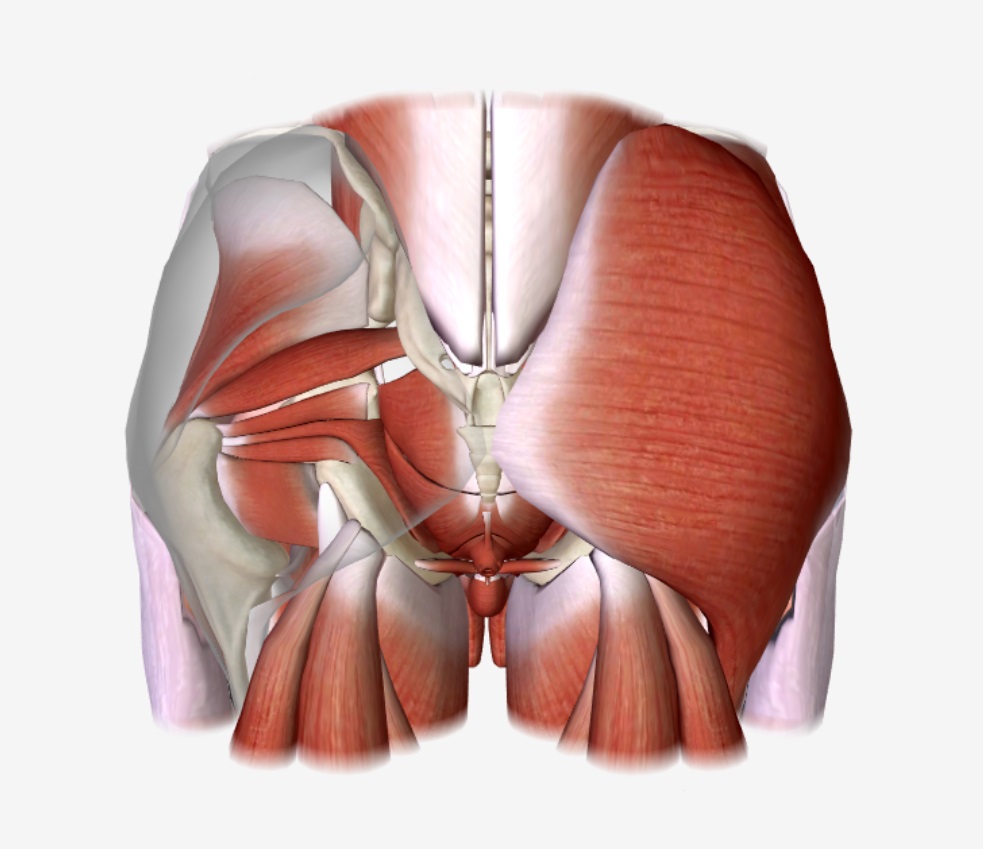Playlist
Show Playlist
Hide Playlist
Gluteal Region – Overview of Arterial Supply to Lower Limb
-
Slides 08 LowerLimbAnatomy Pickering.pdf
-
Download Lecture Overview
00:00 Now, let’s move on to the gluteal region, and this is supplied by the gluteal arteries, the superior and the inferior gluteal arteries. We can see these on the screen here. 00:12 Posterior dissection of the gluteal region, we can see the superior gluteal artery here, and we can see the inferior gluteal artery coming out here. Remember, these are an important relationship to piriformis muscle; superior to piriformis and inferior to piriformis. We can see they’re running over towards the head of the femur. If you look on this side of the screen, we can see that there’s the potential for some anastomosis between the gluteal arteries coming from the internal iliac, and the circumflex arteries coming from the profunda femoris, the deep artery. And we can see here we’ve got numerous branches. Here, we’ve got the lateral circumflex artery that’s running all the way around the proximal aspect of the femur. And then here, we can see we’ve got the medial circumflex artery which is coming around in this direction and going up towards the medial aspect of the femur. 01:13 So we’ll have a look at this anastomosis. But let’s have a look at the gluteal arteries. 01:17 They arise from the internal iliac within the pelvis. And they enter the gluteal region by passing through the greater sciatic foramen. The superior gluteal artery passes through the suprapiriform foramen. This is above piriformis. And the inferior gluteal artery passes through the infrapiriform foramen. This is below piriformis. This superior gluteal artery is going to supply gluteus medius, minimus, and tensor fascia lata. Here, we can see piriformis muscle, this triangular-shaped muscle here. And coming from above piriformis, we have the superior gluteal neurovascular bundle, and this superior gluteal artery is here. Inferior to piriformis, we have the inferior gluteal artery coming out. We can see it here. And that is going to supply gluteus maximus. It also supplies obturator internus, quadratus femoris, and provides blood to the proximal posterior thigh muscles. And here we have an important connection between profunda femoris and the inferior gluteal artery. And this is known as the cruciate anastomosis. So the cruciate anastomosis is formed by four blood vessels. And only some of them we can see here. But cruciate means cross. So we have the inferior gluteal which is sending a branch downwards. We have the inferior gluteal which is sending a branch downwards here. We also have the medial circumflex, and we’ve got the medial circumflex which is sending a branch transversely across. Remember, medial circumflex is going to be positioned deep the quadratus femoris. So now quadratus femoris has been reflected. We can see that here. We also have, coming from the lateral aspect another transverse branch. So the medial and the lateral circumflex arteries running around the proximal aspect of the femur form these transverse branches. Feeding down into descending branch from inferior gluteal and running upwards is going to be an ascending branch from the first perforating artery, and the first perforating artery comes from the profunda femoris artery. So we have one coming down, inferior gluteal branch, one coming up from the first perforating, and two, running transversely to form this cross there from the medial and lateral circumflex. 03:51 This is known as the cruciate anastomosis.
About the Lecture
The lecture Gluteal Region – Overview of Arterial Supply to Lower Limb by James Pickering, PhD is from the course Lower Limb Anatomy [Archive].
Included Quiz Questions
Which muscle receives its blood supply from the superior gluteal artery?
- Tensor fascia lata
- Piriformis
- Quadratus femoris
- Rectus abdominis
- Iliotibial band
Which artery participates in cruciate anastomosis?
- First perforating artery
- Superior gluteal artery
- Anterior circumflex artery
- Posterior circumflex artery
- Middle gluteal artery
Customer reviews
5,0 of 5 stars
| 5 Stars |
|
5 |
| 4 Stars |
|
0 |
| 3 Stars |
|
0 |
| 2 Stars |
|
0 |
| 1 Star |
|
0 |




